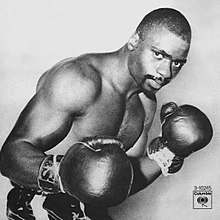Hurricane (Bob Dylan song)
| "Hurricane" | ||||||||||||
|---|---|---|---|---|---|---|---|---|---|---|---|---|
 |
||||||||||||
| Single by Bob Dylan | ||||||||||||
| from the album Desire | ||||||||||||
| B-side | "Hurricane (Part II)" | |||||||||||
| Released | November 1975 | |||||||||||
| Format | Single | |||||||||||
| Recorded | July 1975 & October 24, 1975 at Columbia Studios, New York | |||||||||||
| Genre | Folk rock, protest song | |||||||||||
| Length | 4:56 (Part I) 3:37 (Part II) 8:33 (Album version) |
|||||||||||
| Label | Columbia | |||||||||||
| Writer(s) | Bob Dylan, Jacques Levy | |||||||||||
| Producer(s) | Don DeVito | |||||||||||
| Bob Dylan singles chronology | ||||||||||||
|
||||||||||||
|
||||||||||||
| 9 tracks |
|---|
|
"Hurricane" is a protest song by Bob Dylan co-written with Jacques Levy, about the imprisonment of Rubin "Hurricane" Carter. It compiles alleged acts of racism and profiling against Carter, which Dylan describes as leading to a false trial and conviction.
Carter and a man named John Artis had been charged with a triple murder at the Lafayette Grill in Paterson, New Jersey, in 1966. The following year Carter and Artis were found guilty of the murders, which were widely reported as racially motivated. In the years that followed, a substantial amount of controversy emerged over the case, ranging from allegations of faulty evidence and questionable eyewitness testimony to an unfair trial.
In his autobiography, Carter maintained his innocence, and after reading it, Dylan visited him in Rahway State Prison in Woodbridge Township, New Jersey.
"Dylan had written topical ballads such as "The Lonesome Death of Hattie Carroll" and Bob wasn't sure that he could write a song [about Carter]... He was just filled with all these feelings about Hurricane. He couldn't make the first step. I think the first step was putting the song in a total storytelling mode. I don't remember whose idea it was to do that. But really, the beginning of the song is like stage directions, like what you would read in a script: 'Pistol shots ring out in a barroom night.... Here comes the story of the Hurricane.' Boom! Titles. You know, Bob loves movies, and he can write these movies that take place in eight to ten minutes, yet seem as full or fuller than regular movies".
After meeting with Carter in prison and later with a group of his supporters, Dylan began to write "Hurricane". The song was one of his few "protest songs" during the 1970s and proved to be his fourth most successful single of the decade, reaching #33 on the Billboard Hot 100.
Dylan first recorded the song in late July 1975; it featured Scarlet Rivera on violin and Vinnie Bell on Danelectro Bellzouki 12-string guitar. Dylan was forced to re-record the song, with altered lyrics, in October 1975 after concerns were raised by Columbia's lawyers that references to Alfred Bello and Arthur Dexter Bradley (the two star witnesses of the case) as having "robbed the bodies" could result in a lawsuit. Bello and Bradley had never been accused of such acts. Because there was too much leakage on the multitracks to make a vocal "punch in," Dylan decided to re-record the entire song. At this time, he was already rehearsing for his upcoming tour, and the musicians from the Rolling Thunder Revue were still at his disposal. Dylan took violinist Rivera, guitarist Steven Soles, bassist Rob Rothstein, drummer Howie Wyeth, and percussionist Luther Rix back into the studio, and a new, faster version of "Hurricane" was recorded with Don DeVito again producing, and Ronee Blakley providing a harmony vocal. (There is a noticeable mistake in the 8-minute recording at 4:02 where the backing singer (Blakley) gets her line wrong. She sings: "Remember you saw (said) you saw the getaway car.") The final version of the song, which runs over eight minutes, was spliced together from two separate takes completed on October 24, 1975.
...
Wikipedia
